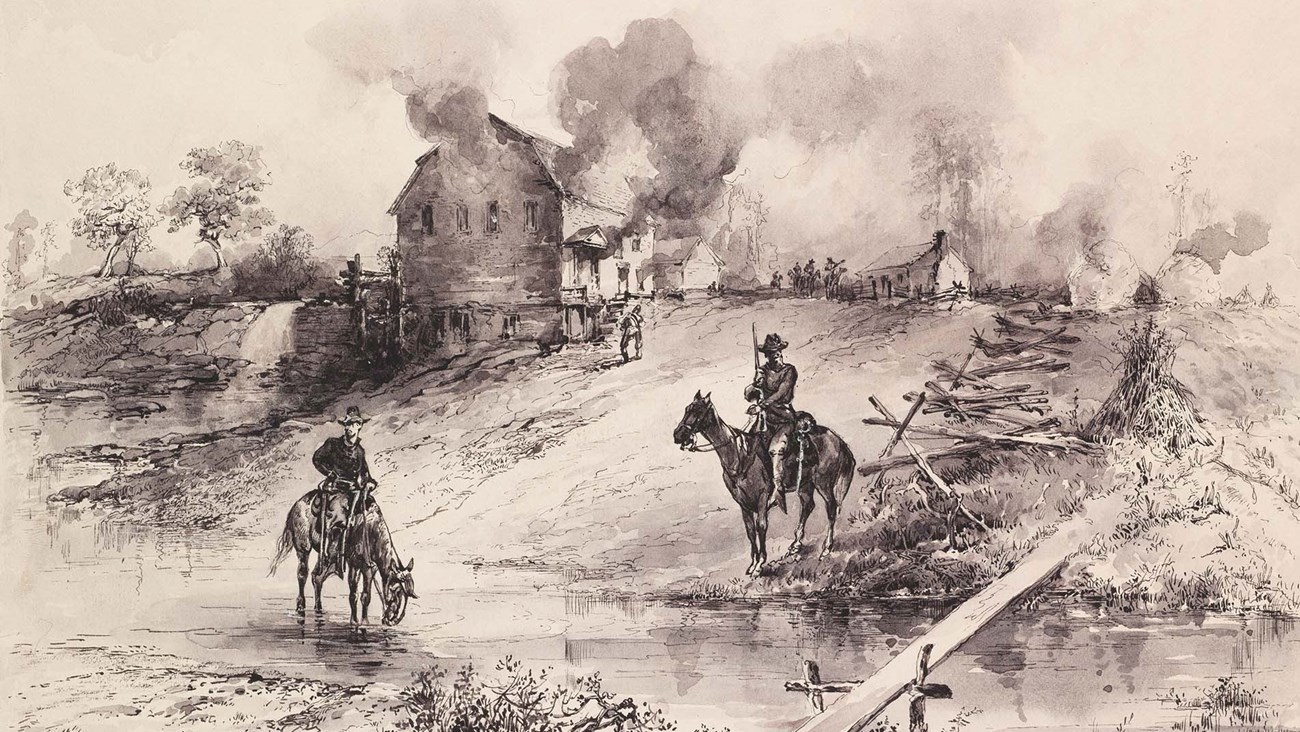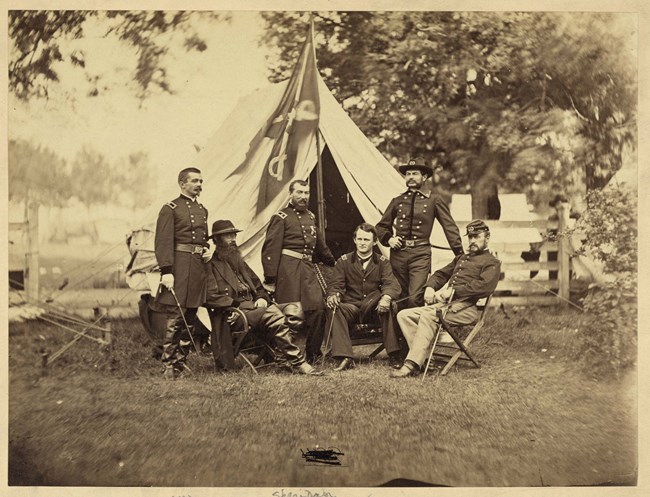Part of a series of articles titled From Backcountry to Breadbasket to Battlefield and Beyond.
Previous: Voices from a War Torn Valley
Next: Beginning of the End
Article

Virginia Historical Society
“The horror and crime of the devastations was remarkable even in Yankee warfare. They impoverished a whole population: they reduced women and children to beggary and starvation.”
Edward A. Pollard
The Union’s new total war policy in 1864 led to “The Burning” of the Valley, which left the land scorched and brought tremendous suffering for its residents. “The Burning,” carried out by the Union army in September and October 1864 systematically destroyed the Valley’s agricultural resources across a 75 mile swath of the Valley floor.

Library of Congress
To shorten the war and limit the loss of life, the Lincoln Administration endorsed a total war policy aimed at devastating the Southern economy. General Ulysses S. Grant wanted “the Shenandoah Valley to remain a barren waste” and ordered General Philip Sheridan to damage railroads and crops, carry off livestock, and prevent further planting. The Union army burned crops, mills, factories and two thousand barns, along with confiscating or killing thousands of farm animals. This campaign, known as “The Burning,” denied the Confederacy the ability to feed its armies.
As the home front became a the front lines, civilian suffering grew. Valley residents experienced the harsh realities of war. The total war policy ruined the livelihoods of both rich and poor, who could do little but watch the war destroy their dreams of independence. Hundreds of families packed up and left. Tired of war and with their property and farm animals destroyed, they had little incentive to stay.
Part of a series of articles titled From Backcountry to Breadbasket to Battlefield and Beyond.
Previous: Voices from a War Torn Valley
Next: Beginning of the End
Last updated: December 2, 2021